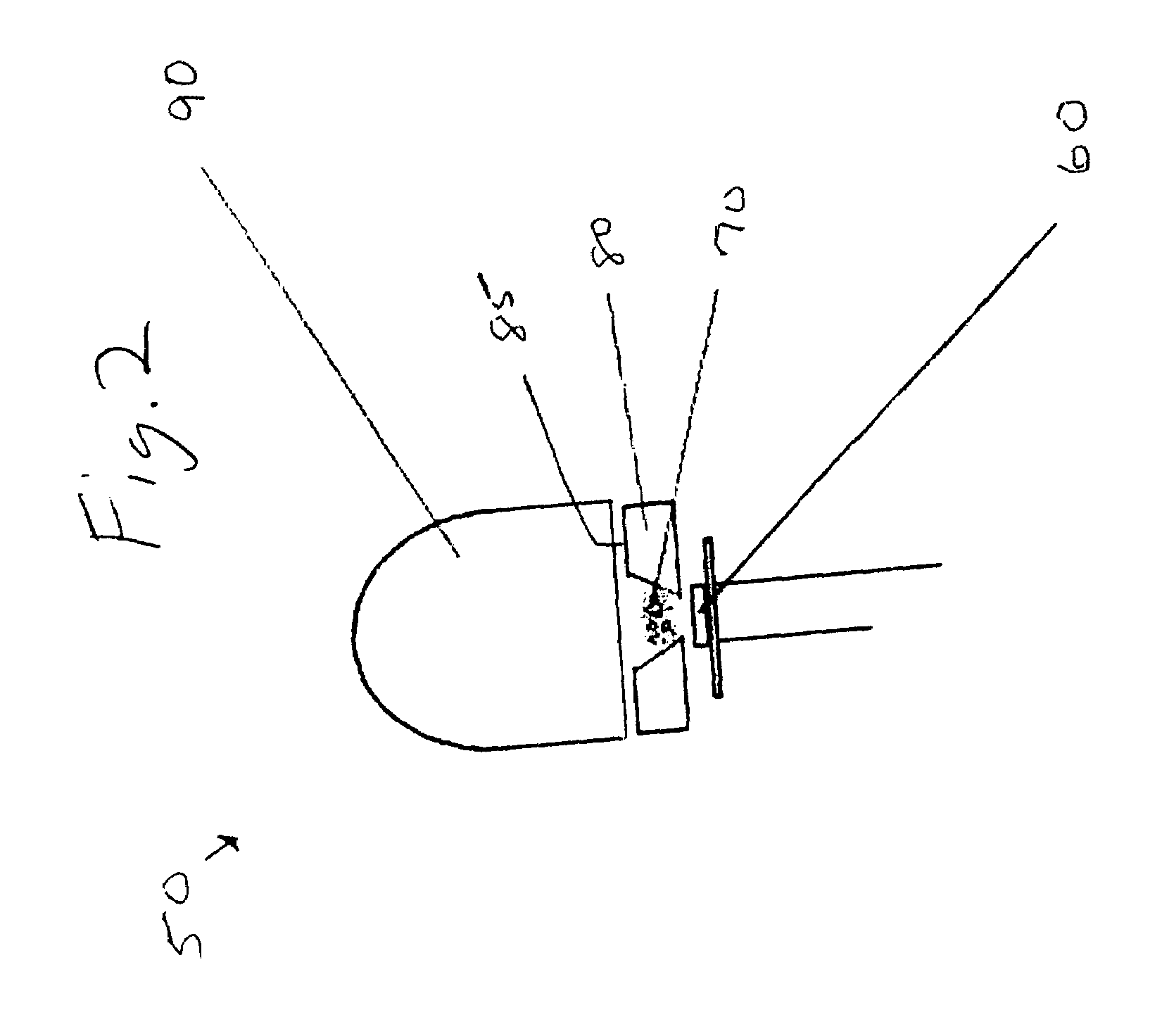Light source using emitting particles to provide visible light
- Summary
- Abstract
- Description
- Claims
- Application Information
AI Technical Summary
Benefits of technology
Problems solved by technology
Method used
Image
Examples
embodiment 1
[0036]FIG. 1 shows an upconversion embodiment 1 of the invention with conical reflector 25. An approximately 970 to approximately 980 nm diode laser 40 can be used to pump the upconversion material particles (to be described later) within a mixture 30 of the upconversion particles that are encapsulated in p-PMMA(phosphorylated polymethymethacrylate). The upconversion particles then emit a second wavelength dependant on the type of material used. The light of the second wavelength is then reflected by conical reflector 25 such as an aluminum, metal conical reflector and the like, within sample holder 20 and can be directed towards a lens 10 such as an acrylic lens, polycarbonate lens, and the like. The shape of the lens 10 focuses the light of the second wavelength in a selected beam angle.
embodiment 50
[0037]FIG. 2 shows another upconversion embodiment 50 with a reflector cup 85. An approximately 970 to approximately 980 nm light-emitting diode (LED) 60 can be used to pump the upconversion particles that are part of a mixture 70 of the upconversion particles that are encapsulated in p-PMMA. The upconversion particles then emit a second wavelength dependant on the type of material used. The light of the second wavelength can then be reflected by a reflector cup 85 such as a aluminum, metal reflector cup, and the like, and are directed towards the lens 90 such as an acrylic lens, polycarbonate lens, and the like. Similar to the lens in FIG. 1, the shape of the lens 90 in FIG. 2 can focus the light of the second wavelength in the desired beam angle.
embodiment 100
[0038]FIG. 3 shows an embodiment 100 of the output of a diode laser 110 coupled to a waveguide 120. The output of an approximately 970 to approximately 980 nm diode laser 110 can be coupled into a waveguide 120, such as a planer (e.g., flat glass), optical fiber, and the like. The waveguide 120 delivers the near-infrared pump light to the upconversion particles that are in the mixture 140 of the upconversion particles encapsulated in p-PMMA. The upconversion particles then emit a second wavelength dependant on the type of particles used. The light of the second wavelength is then reflected and directed by a reflector 130 such as a parabolic, compound parabolic concentrator (CPC), or reflector cup, and the like.
PUM
 Login to View More
Login to View More Abstract
Description
Claims
Application Information
 Login to View More
Login to View More - R&D
- Intellectual Property
- Life Sciences
- Materials
- Tech Scout
- Unparalleled Data Quality
- Higher Quality Content
- 60% Fewer Hallucinations
Browse by: Latest US Patents, China's latest patents, Technical Efficacy Thesaurus, Application Domain, Technology Topic, Popular Technical Reports.
© 2025 PatSnap. All rights reserved.Legal|Privacy policy|Modern Slavery Act Transparency Statement|Sitemap|About US| Contact US: help@patsnap.com



